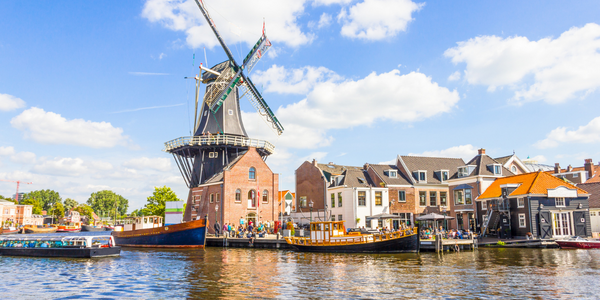Customer Company Size
Large Corporate
Region
- America
Country
- United States
Product
- TRIPCard
- FleetFocus
Tech Stack
- Real-time data integration
Implementation Scale
- Enterprise-wide Deployment
Impact Metrics
- Cost Savings
- Productivity Improvements
Technology Category
- Functional Applications - Fleet Management Systems (FMS)
Applicable Industries
- Cities & Municipalities
Applicable Functions
- Logistics & Transportation
Use Cases
- Fleet Management
Services
- System Integration
About The Customer
The customer in this case study is the State of Oklahoma’s Fleet Management Division. This division is responsible for managing the state's large fleet of vehicles, which includes ensuring that employees in the field have the means to make necessary purchases such as fuel and vehicle maintenance. The division was previously using general credit cards or more specialized fleet cards for these purchases. However, they faced challenges with these cards as they didn't have many controls, leading to potential abuse and increased administrative work due to the need for manual reconciliation of bills and paper reports from employees.
The Challenge
The State of Oklahoma’s Fleet Management Division was using fuel cards that lacked controls, making it possible for employees to purchase non-authorized items. Employees were required to submit paper reports that had to be manually reconciled with the monthly fuel card bill. This was labor intensive for both the employee cardholders and the administrative team responsible for reconciling the bills. Any discrepancies had to be investigated manually, and due to the delay in time between the purchase and the monthly bill, it was often hard for employees to provide information about the purchases in question.
The Solution
The State of Oklahoma’s Fleet Management Division adopted the TRIPCard, a p-card backed by MasterCard that can be used by organizations to purchase fuel and other authorized items. Unlike any other fuel or fleet card on the market, it integrates directly into FleetFocus in near real-time, where it is readily available for all FleetFocus functions, such as reporting, dashboards and billing. When employees make purchases using TRIPCard, pre-authorization data is sent immediately to the TRIPCard portal for review. Once the transaction has been processed, the completed transaction data is received into the TRIPCard portal where the information is verified against the data in FleetFocus. Fleet managers can set authorization parameters for each user or vehicle, such as limiting a number of gallons to be dispensed or specifying gasoline versus diesel. Any purchases that fall outside the normal parameters flags the completed charge as a failed transaction so that managers can review it immediately.
Operational Impact
Quantitative Benefit

Case Study missing?
Start adding your own!
Register with your work email and create a new case study profile for your business.
Related Case Studies.

Case Study
Turning A Stadium Into A Smart Building
Honeywell created what it called the “intelligent system” for the National Stadium in Beijing, China, turning the venue for the opening and closing events at the 2008 Summer Olympics into a “smart building.” Designed by highly controversial artist Ai Weiwei, the “Bird’s Nest” remains one of the most impressive feats of stadium architecture in the world. The 250,000 square meter structure housed more than 100,000 athletes and spectators at a time. To accommodate such capacity, China turned to Honeywell’s EBI Integrated Building Management System to create an integrated “intelligent system” for improved building security, safety and energy efficiency.
.png)
Case Study
Smart Street Light Network (Copenhagen)
Key stakeholders are taking a comprehensive approach to rethinking smart city innovation. City leaders have collaborated through partnerships involving government, research institutions and solution providers. The Copenhagen Solutions Lab is one of the leading organizations at the forefront of this movement. By bringing together manufacturers with municipal buyers, the Copenhagen Solutions Lab has catalyzed the development and deployment of next-generation smart city innovations. Copenhagen is leveraging this unique approach to accelerate the implementation of smart city solutions. One of the primary focus areas is LED street lighting.

Case Study
Buoy Status Monitoring with LoRa
The Netherlands are well-known for their inland waterways, canals, sluices and of course port activities. The Dutch Ministry of Infrastructure indicates that there are thousands of buoys and fixed items in and near water environments that would profit from IoT monitoring. One of the problems with buoys for example, is that they get hit by ships and the anchor cable breaks. Without connectivity, it takes quite some time to find out that something has happened with that buoy. Not to mention the costs of renting a boat to go to the buoy to fix it. Another important issue, is that there is no real-time monitoring of the buoys at this moment. Only by physically visiting the object on the water, one gains insight in its status.

Case Study
Barcelona Case Study
Barcelona’s heavy traffic and its associated high levels of pollution were the primary factors that motivated some companies and universities to work on strategies for improving traffic in the city centre. Bitcarrier is one of the technologies involved in the In4Mo Project, whose main objective is to develop the applications that form the core of smart mobility, one of the fundamental pillars of the smart city concept.

Case Study
China Mobile Smart Parking
Smart Parking, powered by NB-IoT technology, is making it easier for drivers to find free parking spots. Cities can better manage their parking assets and maximize the revenue available to them as a result. Drivers searching for parking create congestion and pollution by circling and hunting for available parking. Smart Parking services are able to significantly ease these problems by guiding a driver directly to a parking space.








